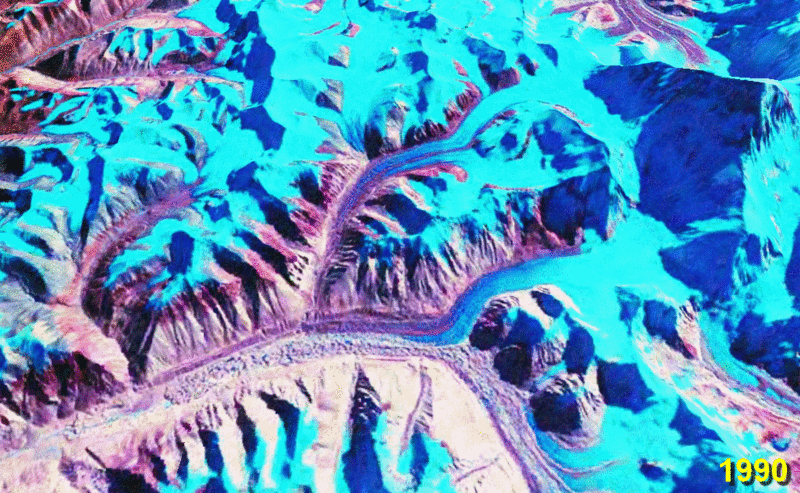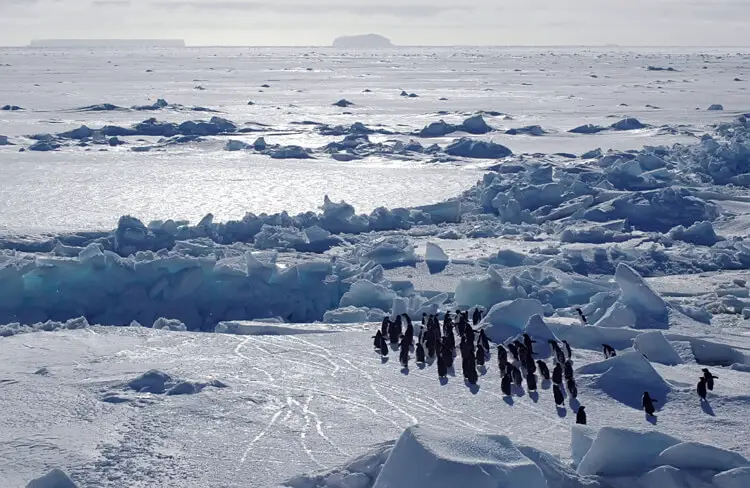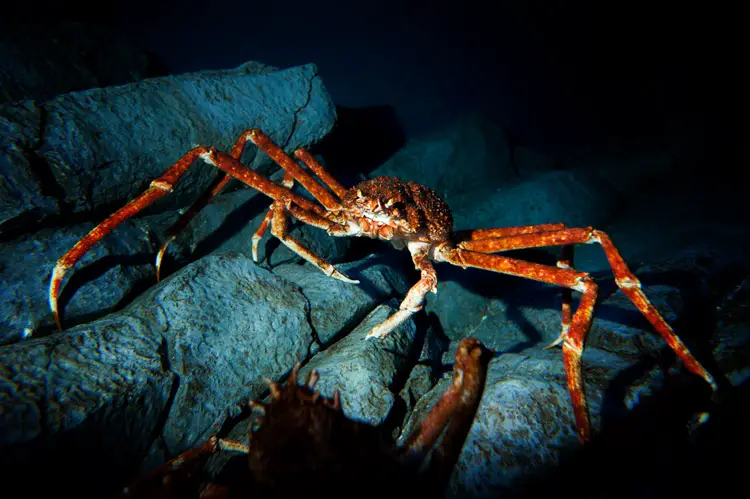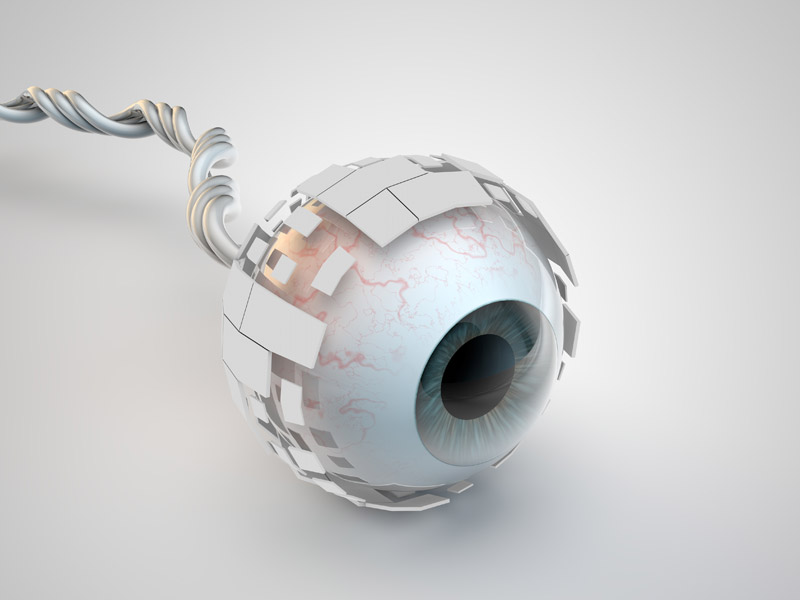
|
|
|
|
|
|
2048-2058
Glacier volume in the Everest region has declined by half
At some point during this period (2048-2058), glacier volume in the Mount Everest region falls below 50% of its 2015 level.* The Earth had continued to warm in recent decades and High Mountain Asia – an area that included the Himalayas – was especially sensitive to temperature changes. The glaciers here contained the largest volume of ice outside the polar regions. With global temperatures now 2°C (3.6°F) higher than the pre-industrial average,* melting rates by mid-century have accelerated. In addition to more rapid ice loss, precipitation has changed from snow to rain at critical elevations where glaciers are concentrated. This has acted to reduce glacier growth and increase the areas exposed to melt.
The resulting changes in glacier volume have major impacts on the availability of water for local populations. Initially, the increased melting results in greater flows of water – but the ongoing retreat leads to a decline in warmer months before the monsoon, when rainfall is scarce. Another effect is the formation and growth of temporary lakes dammed by glacial debris. Avalanches and earthquakes can breach these dams, causing catastrophic floods in the basins downstream, with river flows 100 times greater than normal.
This has serious consequences for agriculture and hydroelectric power generation. Of particular concern is the effect on Pakistan and its relationship with neighbouring India,* both dependent on the glacier-fed water resources of the Himalayas. Tensions between the nuclear-armed countries are escalating markedly during this time,* as the water crisis deepens, made worse by ongoing population growth and ever-increasing demand.
A key aspect of these changes has been a steady increase in the freezing level, the elevation where mean monthly temperatures are 0°C. As of 2015, this varied between 3200m in January and 5500m in August. If global average temperatures were to continue rising, the potential increase in height of the freezing level was 800-1200m by 2100, causing a glacier volume loss of between 70% and 99%. However, massive geoengineering projects are perfected in the second half of the century* that will stabilise and eventually reduce the warming.

2048
The Antarctic Treaty comes up for review
Antarctica is the last remaining unspoilt wilderness; untouched by the massive industrialisation common everywhere else on the planet. It covers an area of 13.7 million sq km (5.3 million sq miles) and is covered by an ice sheet 4 km (2.5 miles) deep. It has no human inhabitants, other than a small number of scientists in research stations.
The vast, icy continent is governed by the terms of the Antarctic Treaty, which came into effect in 1961. This was signed by Argentina, Australia, Chile, France, New Zealand, Norway, the UK, Belgium, Japan, South Africa, the USA and Russia. The first seven of these countries have historic claims to the continent (none of which are generally recognised) and the Treaty preserves the status quo, neither recognising nor repudiating the old claims, but forbidding their expansion in any way. The terms of the Treaty also forbid the assertion of new claims.
The discovery of a hole in the ozone layer, and other concerns, led to the addition of a new environmental protocol agreed in 1991. This entered force in 1998. It was intended to protect Antarctica's environment and ecosystems, and included a total ban on the exploitation of mineral and energy resources, as well as strict regulation of pollution and other damaging activities. The protocol is open for review in 2048, exactly 50 years after it was implemented.*
Much has changed in the last half century. Earth's population is over 50% larger, placing a substantial drain on the Earth's resources which has become alarmingly obvious by now. Metal and mineral supplies continue to be an issue, even with large-scale recycling systems in place.* Despite objections from environmentalists, there is general consensus among the international community that some limited exploitation of Antarctica should be permitted within certain specially controlled areas. Over the next few years, a new treaty is drawn up with modified clauses, though disputes continue over territorial boundaries.
There are significant logistical challenges to mining and mineral extraction in the region – such as the isolation, extreme cold, rough seas and thick ice sheet. However, new technologies look set to mitigate these problems, including the use of robots, heavy automation and alternative methods of drilling. In addition, climate change and the melting of ice is making it possible to exploit some previously inaccessible areas of the western ice sheet.

© Staphy | Dreamstime.com
King crabs are infesting Antarctic marine ecosystems
In addition to humanity's increased presence resulting from the Antarctica Treaty review described above, certain animal species have also begun to move into and exploit the continent due to changing environmental conditions. King crabs are one such species. For tens of millions of years, icy cold waters had excluded shell-crushing fish and crustaceans from the continental shelf surrounding Antarctica. Rapid warming has now allowed predatory crustaceans to return. From the 1950s to the 2010s, the west coast of the Antarctic Peninsula witnessed a 3.2°C temperature rise – several times the global average. This allowed king crabs to move up the outer shelf, into shallower waters just 200 metres in depth. By the middle of the 21st century,* they are infesting many coastal areas along the Western Antarctic Peninsula. This is causing severe disruption to the food chain, with catastrophic consequences for unique seafloor communities in the region.*

Bionic eyes are perfected
By the late 2040s, artificial retinas and other visual prostheses can match the visual quality of a real human eye.* The first generation of these devices had emerged in the early 2000s, with bulky external equipment and only a very small number of pixels. Subsequent versions featured much higher resolutions, providing ever-more capabilities to improve the living standard of patients with partial or total blindness.
Further miniaturisation of components in the 2020s and 30s, alongside new materials and battery/power improvements, resulted in smoother and more colourful visual qualities – as opposed to the monotone and blocky view of the world in the previous generation of devices. This progress would continue into the 2040s, culminating in electrode arrays with hundreds of megapixels and wireless operation.
Myopia and other eye conditions were a growing problem in the early 21st century. Half of the world's population faced living with short sight, with up to one-fifth of these people at a significantly increased risk of blindness.* Gene therapy proved to be vital in addressing this global issue, but visual prostheses became an increasingly important addition to the range of treatments available.
By 2048, the implants not only provide a cure, but also a means of further enhancing the day-to-day experience of users, with such features as embedded cameras, WiFi, augmented reality, infrared, zoom capability and so on. This is now tempting even healthy adults to upgrade their sight in one or both eyes by taking advantage of the improvements offered by computerised vision.* These types of devices had already been available some years earlier to the military and certain other specialised or high-profile citizens, but are now inexpensive enough to have reached the mainstream. There are issues related to the technology – chiefly in regard to privacy and security, which helps in exposing a number of government and corporate scandals.

« 2047 |
⇡ Back to top ⇡ |
2049 » |
If you enjoy our content, please consider sharing it:
References
1 Modelling glacier change in the Everest region, Nepal Himalaya, The Cryosphere:
http://www.the-cryosphere.net/9/1105/2015/tc-9-1105-2015.html
Accessed 16th June 2015.
2 See 2049.
3 Indus Waters Treaty, Wikipedia:
https://en.wikipedia.org/wiki/Indus_Waters_Treaty
Accessed 16th June 2015.
4 Climate Wars: The Fight for Survival as the World Overheats, by Gwynne Dyer:
http://www.amazon.com/Climate-Wars-Fight-Survival-Overheats/dp/1851688145
Accessed 16th June 2015.
5 See 2060-2100.
6 Protocol on Environmental Protection to the Antarctic Treaty, Wikipedia:
http://en.wikipedia.org/wiki/Protocol_on_Environmental_Protection_to_the_Antarctic_Treaty
Accessed 8th August 2010.
7 5 Valuable Metals That Could Vanish by 2055, Scribol:
http://scribol.com/environment/waste-and-recycling/5-valuable-metals-that-could-vanish-by-2055/
Accessed
31st December 2017.
8 No barrier to emergence of bathyal king crabs on the Antarctic shelf, PNAS:
http://www.pnas.org/content/early/2015/09/24/1513962112.long
Accessed 7th October 2015.
9 King crabs threaten Antarctic ecosystem due to warming ocean, Science Daily:
http://www.sciencedaily.com/releases/2015/09/150928155847.htm
Accessed 7th October 2015.
10 Bionic eye technology, 2000-2050, Future Timeline – Data & Trends:
https://www.futuretimeline.net/data-trends/14.htm
Accessed 18th August 2019.
11 Half the world to be short-sighted by 2050, Future Timeline Blog:
https://www.futuretimeline.net/blog/2016/02/22.htm
Accessed 18th August 2019.
12 Tomorrow's bionic eyes will have 'Predator' vision, engadget:
https://www.engadget.com/2019/08/09/Second-sight-orion-bionic-eyes-predator-vision/
Accessed 18th August 2019.
![[+]](https://www.futuretimeline.net/images/buttons/expand-symbol.gif)






